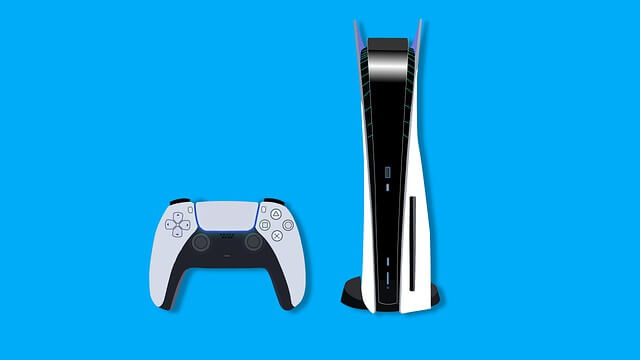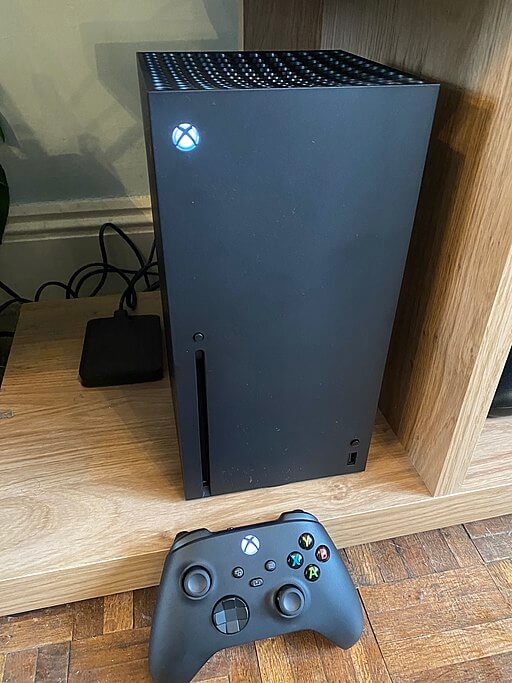Gaming consoles always have been a choice of gamers that don’t want themselves to be tangled in PC specifications and its setup hustle. They deliver more of a plug n play feature in domain of gaming. The debate that whether consoles are outperforming PCs is a long shot but it is very clear that, since Sony has launched its Play Station 5, the claims for the most powerful gaming console by Microsoft is fading out. Since the inception of gaming consoles, Sony has been a leading brand and has developed some of the most iconic consoles that are still a part of our memories. The legendary PlayStation 2 still has a place in history and it crushed sales records across the globe.
On the contrary, Microsoft had a bit of a rough start. It has always struggled to compete Sony’s console but in no way they are inferior. The XBOX launched by Microsoft is very capable device and, in some cases, even outperforms PlayStation. This healthy rivalry has given us, the consumers, many capable and high-tech consoles which perform in an excellent manner and crush benchmark scores in terms of gaming and computing power. In 2020, both manufacturers came up with their latest lineup of consoles. In order to see that how PlayStation 5 manages to outperform a very powerful console we need to get an in-depth comparison between the two.

Specification sheet comparison
With the introduction of hyper-threading, it has been evident to us that higher specifications do not guarantee top-notch performance. Software and power handling are essential. From a limited resource pulling out maximum power Is the new taboo. The route of optimizations is preferred to reduce the overall development cost and hence increase sales.
Processor (CPU)
PlayStation 5 comes with a custom 8-core AMD Zen 2 CPU clocked at 3.5GHz with SMT (variable frequency technology and Xbox series X also packs a very similar processor with an 8-core AMD Zen 2 CPU clocked at 3.8GHz (3.6GHz with SMT). We might notice a slight increase in the clock speed of Xbox series X.
Graphics Processor (GPU)
Similarly, the graphic processors are also very similar, but in this case, PlayStation 5 takes a bit of lead. With a Custom-built AMD RDNA 2 GPU 36 CUs clocked at 2.23GHz (variable frequency), PlayStation 5 has a slightly higher base clock speed of graphic processor as compared to an AMD’s RDNA 2 GPU 52 CUs clocked at 1.825 GHz powering the new Xbox Series X.
Teraflops (Computing Power)
The teraflops figure of both consoles is also very identical. PlayStation 5 spitting out 10.28 teraflops of computing power is very close to 12.58 teraflops of Xbox Series X’s. So, in short, on papers, we have a pretty similarly specked device. Now it comes down solely to the software and optimization of this power to attain maximum power from this computing potential.

RAM
As discussed earlier, both the consoles are very identical. The Xbox Series X comes with 16 GB G-DDR 6 RAM, so does the PlayStation 5. Both consoles have the same RAM, and the base clock frequency for both of these modules is also very similar.
Memory Bandwidth
the operating bandwidth for the memory stick is also significant. It clearly makes the data flow fast and seamless. The memory bandwidth of Xbox Series X is slightly less than that of the play station’s. With an average speed of about 336 GB/s Xbox, it lags behind. Whereas on the other hand, the bandwidth of PlayStation 5’s memory module is about 448 GB/s, which a significant gain.
Storage Options
Xbox Series X comes with only one storage option. 1 TB PCI-e fourth generation of NVME storage, whereas the PlayStation 5 is equipped with an 825 GB of PCI-e fourth-generation NVME SSD. Both the storage options are decent and very much identical.
Input / output throughput
This is the segment that deals with the lazy performance of Xbox. The interconnection and communication of storage and computing units are essential, and it needs to be seamless to deliver optimal performance. With almost double the I/O throughput, PlayStation 5 leads the way. With a very decent 5.5 GB/s raw transfer rate PlayStation is higher than 2.4 GB/s of Xbox.
Head-to-head comparison
With a slightly better GPU clock speed, the ray tracing ability of Xbox is also higher than play stations. But the significant difference was that of dropping frames in 4k. PlayStation 5 somehow manages the 4k frame rendering more efficiently. In some cases, with the same articles, the frame drop gap was as high as 40 fps running on the same settings.

API Limitation
The dips while playing some demanding titles are fairly noticeable on Xbox, and it was felt that some sort of API limitation was holding the graphic processor of Xbox from performing at full potential. As those dips are concerned, they do matter a lot. While playing a first-person shooter, a racing title, or something as simple as Minecraft, the sudden stutter of frames cause a break in the performance. The gaming experience is affected drastically.
Variable Refresh Rate Technology
The variable refresh rate algorithms can overcome these dips but only If they are not significant. We can conclude that PlayStation’s higher frame performance is excellent or the variable frame rate compensator is very efficient. Whatever the case, it is evident that PlayStation 5 is better in higher frame rate titles.
Advertised Articles Failing to perform
Moreover, Microsoft has a marketing collaboration with the very famous title, Assassin’s Creed Valhalla. On various occasions, the title was marketed alongside the Xbox Series X console, depicting the concept that it would have been the best choice to enjoy this title. But to our surprise, the demographics are entirely inverted. PlayStation 5 outperforms Xbox Series X in this title as well. The Xbox version of the game seems to have many screen tearing and dips above 60 fps!! Whereas the PlayStation 5 version of the same title appears to run smoothly. However, the variable refresh rate algorithm of Xbox tires to coverup this screen tearing issue, but a very highly respected modern television would be needed to completely eliminate this issue.
Image quality and resolution
Similarly, the image quality and resolution of PlayStation 5 are also better than that of Xbox Series X despite being slightly more powerful. For example, another famous and demanding title is the Dirt 5. the PlayStation version, in enhanced image quality mode, gets significantly better average resolution and texture filtering than the Xbox Series X version. Running the same title in high-performance mode on PlayStation 5 reflects the true potential of the console. With a frame rate of over 120 fps, the details produced by PlayStation 5 are far too higher than that of Xbox Series X. these Comparisions clearly depicts that somehow Xbox Series X, despite being more capable specifications vise, is not performing better than PlayStation 5 in most circumstances. And it’s often the case where Sony’s console takes the lead. Some of these issues might be due to a software bug or faulty tracing algorithm execution, but that is only the tip of the iceberg.

Developer’s kit allotment
The developers of titles attain a developer’s kit by Microsoft after submitting the title and having the certification somewhere around June. Whereas on the other hand, PlayStation 5’s developers kit is readily available to developers in advance, which allows them to work more on performance and integration issues.
Newer GDK Platform
It is always a time-consuming process for developers to familiarize themselves with the new software and tools involved while creating titles for next-generation consoles. Recently Microsoft has switched to GDK, which has been cumbersome for many developers to cope up with. All these reasons pile up to create a laggy performance. Hence, the most potent claimed console takes a hit by a slight managerial and software related issue. The bright side of this is that it can be rectified by modifying and updating the console over the air via various software patches. Till then, we see PlayStation 5 silently dominating the console world.
loading...
loading...
